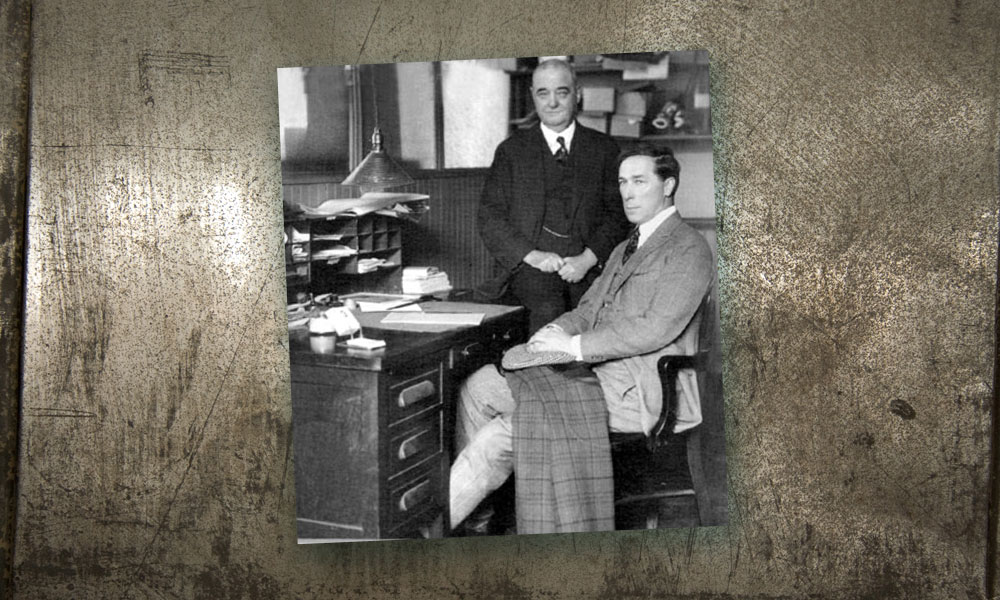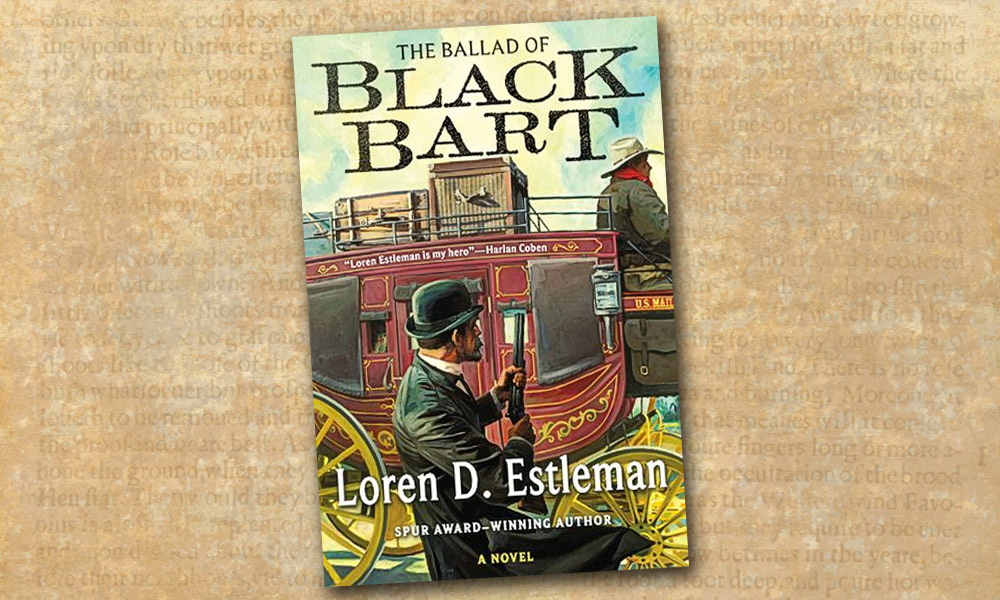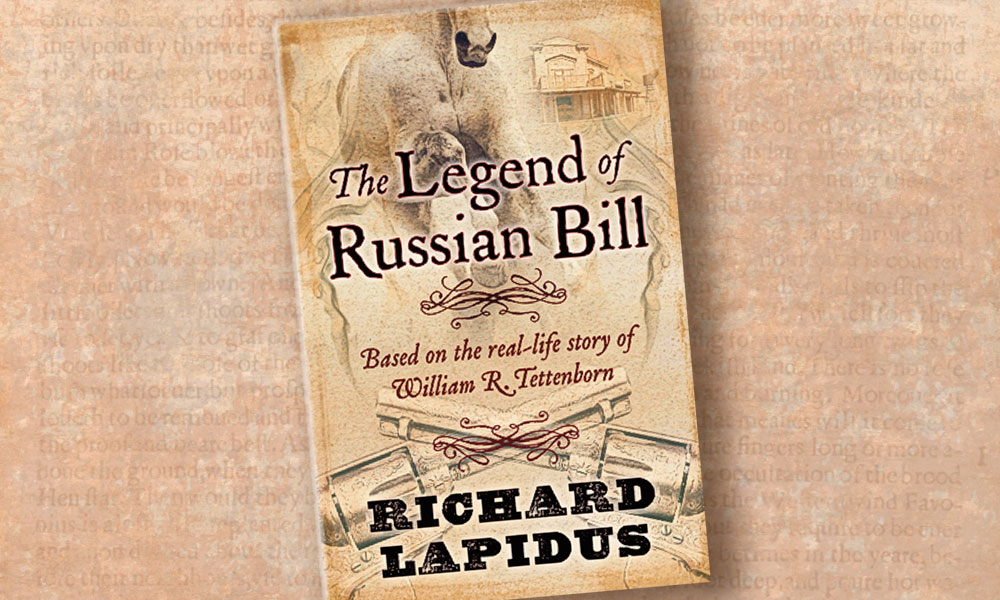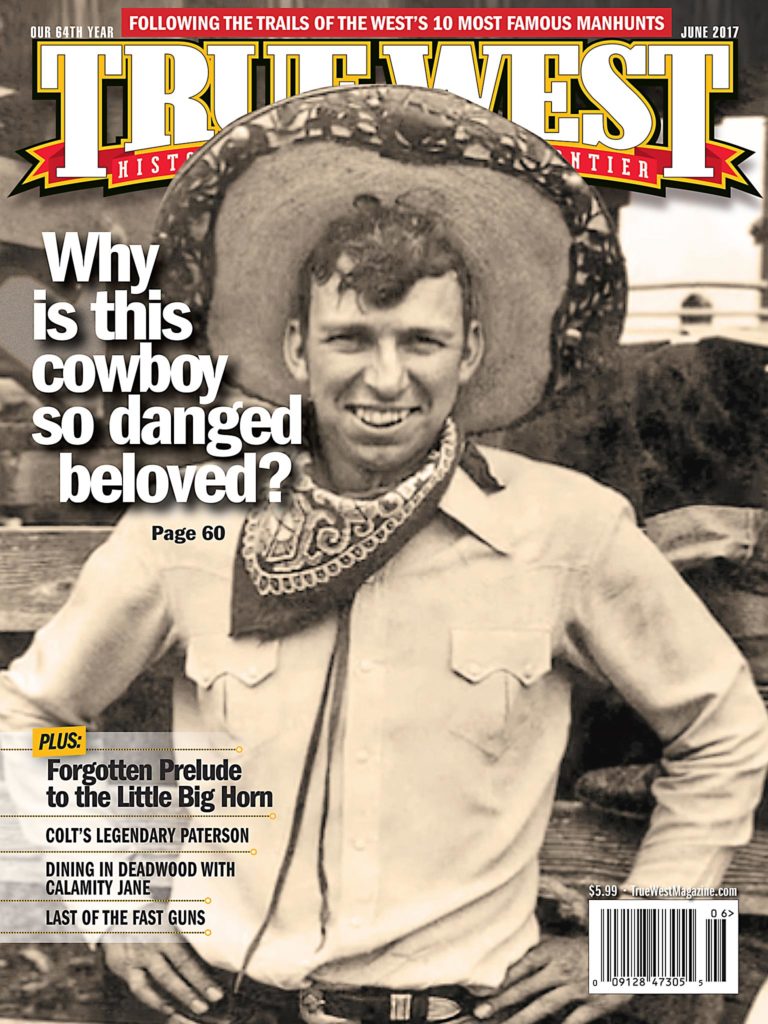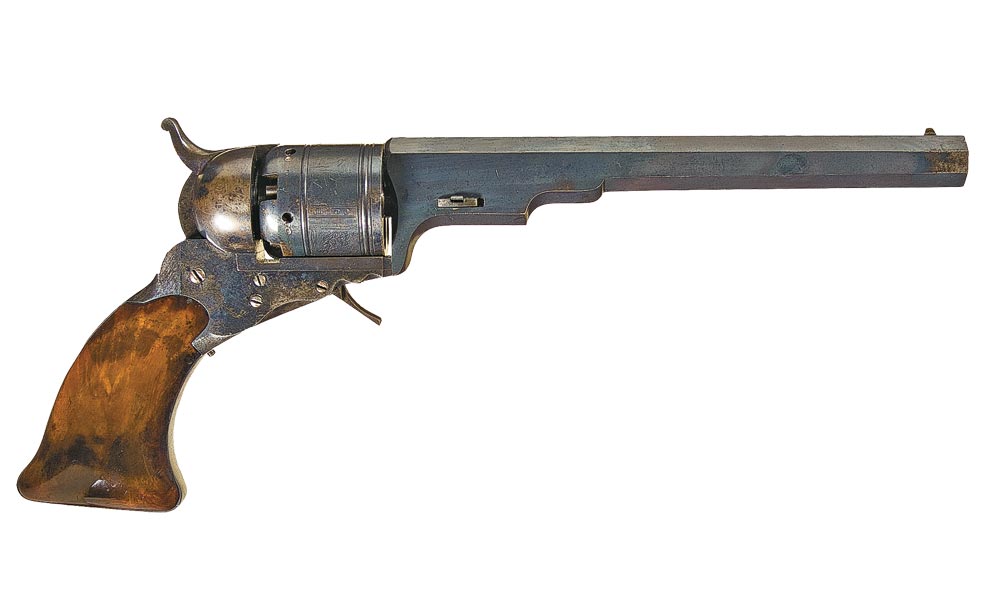
– Courtesy Rock Island Auction Co. –
Firearms buffs generally associate Colt’s Paterson revolver, the first truly practical revolver, with the year 1836, when this revolutionary handgun was patented, and Sam Colt’s Patent Arms Manufacturing Company, in Paterson, New Jersey, was set up. However, it wasn’t until the following year that production actually began on the legendary revolvers.
Beginning in 1837, Colt’s fledgling company turned out the octagonal-barreled, single-action “five shooters” in varying sizes and calibers. Small pocket pistols were usually made with 1¾-inch to 4¾ ½-inch barrels, generally in .28, .31, or .34 caliber, while the mid-sized belt models sported .31 or .34 caliber bores with barrel lengths mainly ranging between 2½ and 6 inches. The larger holster pistols were all .36 bore with barrels from a short 4 inches to a few 12-inch tubes, with most being 7½ inches or 9 inches long. Patersons were simultaneously made with and without the under-barrel rammers (loading levers). They were made without trigger guards. The trigger is contained inside the frame and springs down when the hammer is cocked. After firing, it must be returned to the frame manually.
One of the advantages of the Paterson over other handguns of the day was accuracy, due to its rifled barrel. New and cased with loading accessories and an extra cylinder, a Paterson would fetch from $40 to $50, while its chief rival, the grossly inaccurate smoothbore, multi-barreled “Pepperbox” (so named because it resembled a pepper canister of the era) double-action revolving pistols sold for about one-quarter of that price. Despite the fact that pepperbox pistols outsold Colt’s revolvers by a considerable margin, the success of Col. Sam’s invention in the hands of notable frontiersmen of the day broke ground for Colt’s later, much-improved handguns.
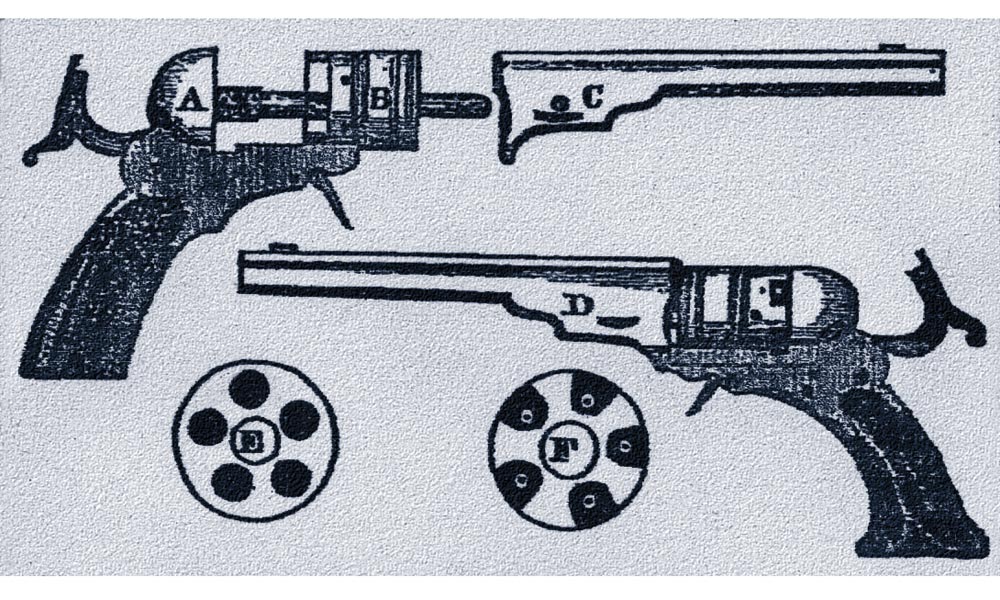
– Courtesy Robert J. Bloeth Collection –
Unfortunately for Colt, poor sales and company management troubles led to its downfall in 1842, having produced only around 2,850 Paterson revolvers, along with about 1,650 revolving rifles and carbines, and approximately 225 multi-chambered shotguns. In spite of these setbacks, along with the Paterson rifle’s poor performance in the humid swamps of Florida, where the 2nd U.S. Dragoons used a number of them during the Seminole War, there are many reports of the decided advantages of the revolver on the early frontier. When Kit Carson and a couple of dozen trappers, several armed with Colt’s invention, rode to the relief of a caravan on the Santa Fe Trail, the multi-shot revolvers so frightened the Indians that they gave up the fight quickly and fled in panic.
It was in the fledgling Republic of Texas, though, where Colt’s Patersons gained their main claim to fame. In April of 1839, Colt sold 180 holster pistols with 9-inch barrels, along with the same number of carbines, to the Texas navy. When this corps disbanded in 1843, those Patersons that were still serviceable were transferred to the Texas Rangers, with each man issued two or three revolvers, along with, as one veteran frontiersman recalled, “a Bowie knife in his belt, and a short rifle on his arm.” When this force took to the field, they were as formidable a band of fighters as could be found anywhere in the world at that time. For example, at the 1844 Pedernales River fight, a patrol of 14 mounted rangers, under the command of Col. John Coffee “Jack” Hays, was attacked by a band of 80 Comanche warriors. Although greatly outnumbered, the Rangers routed the Indians, leaving close to half of the hostiles on the field dead or dying.
Now, 180 years after its introduction, whether cased and elaborately embellished or a plain working gun, original Patersons command prices far beyond the reach of all but the most well-to-do collectors. In spite of its faults, largely resulting from being an entirely new concept in firearms design, the Paterson foaled a legend in revolvers that is unequaled anywhere in history.

